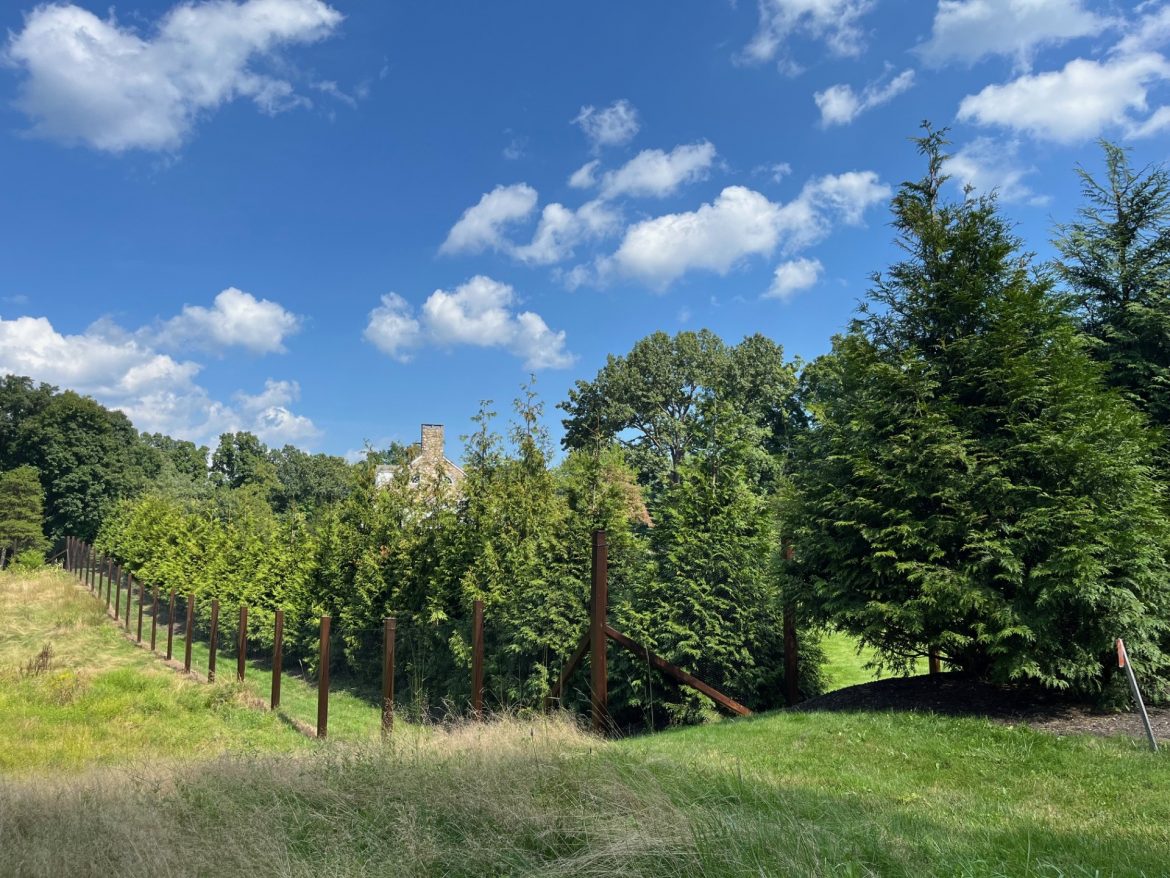The neighbors of a Pastures Lane homeowner say a deer fence installed on the property violates local zoning regulations.
Specifically, according to an appeal filed July 30 on behalf of Colleen Sheldon and David Schwartz, the fence and appurtenances at 78–92 Pastures Lane—adjoining lots owned by the same Wilmington, Del.-based limited liability company— “are not of dark color and do not blend with the natural landscape” and the fence “is clearly visible from a distance of 50 feet.”
“[W]hen you enter Pastures Lane and begin to drive down the road, you come upon the beginning of the property and immediately see a large and very visible deer fence,” according to the letter, filed on behalf of the appellants by attorney Todd Lampert of New Canaan-based Lampert Toohey & Rucci, LLC.
Under the New Canaan Zoning Regulations, any deer fence installed in a front yard “shall be installed in a wooded area and/or shall be screened from the street by landscaping” and “such fence shall be of open design such that it is not especially visible at a distance of fifty feet” (see page 156 here).
What specifically is under appeal is a building permit issued July 12 by the town. The permit itself appears to make no reference to fencing—instead, it calls for an approximately $44,000 automated gate installation.
According to the appeal, the deer fence “also violates New Canaan Zoning setback regulations in that it is over four feet in height and only 23 feet from the road, which is within the 45-foot front yard setback for two-acre zones.”
Backing up their claim that the fence is visible from 50 feet, the appellants say that “when you enter the accessway off of the Pastures Lane cul-de-sac, the deer fence again picks up at a height of eight feet.” That would be a violation even if town officials conclude that the fence runs along a side yard rather than a front yard because in that case “the deer fence would need to start at a height of four feet until it reaches a distance of 45 feet from the cul-de-sac which is [the] front yard. The fence as it now sits is eight feet above grade.”
The fence itself also “abuts a neighbor located at 96 Pastures Lane,” the letter said.
“The wood fence again is within the front yard setback and should not exceed four feet,” it said. “Further, the location of the wood fence blocks the sightline of the abutting landowner making it dangerous to enter or leave the driveway.”
That’s a violation of the regulations, which state that “[n]o fence, post, column, freestanding wall, or portion thereof shall be constructed in a way so as to obstruct corner visibility … at intersections of roads, driveways, accessways, or other travel ways” (see page 155).
“Notwithstanding the obvious nature of this violation, no enforcement action was taken,” the letter said.
The Zoning Board of Appeals is scheduled to meet Sept. 9.

Deer fencing keeps a wide range of animals from accessing yards / land.
This interferes with animal habitats and their seasonal movements.
The justice of deer fencing itself could use more scrutiny.
I would urge all New Canaanites to attend this hearing on Sept 9th to voice your displeasure otherwise this could happen to your neighborhood.
The squirrels, chipmunks and field mice are also tick carriers. These deer fences do not solve any tick related problems.